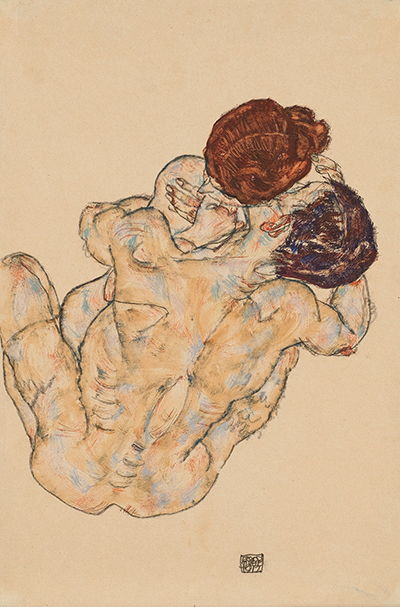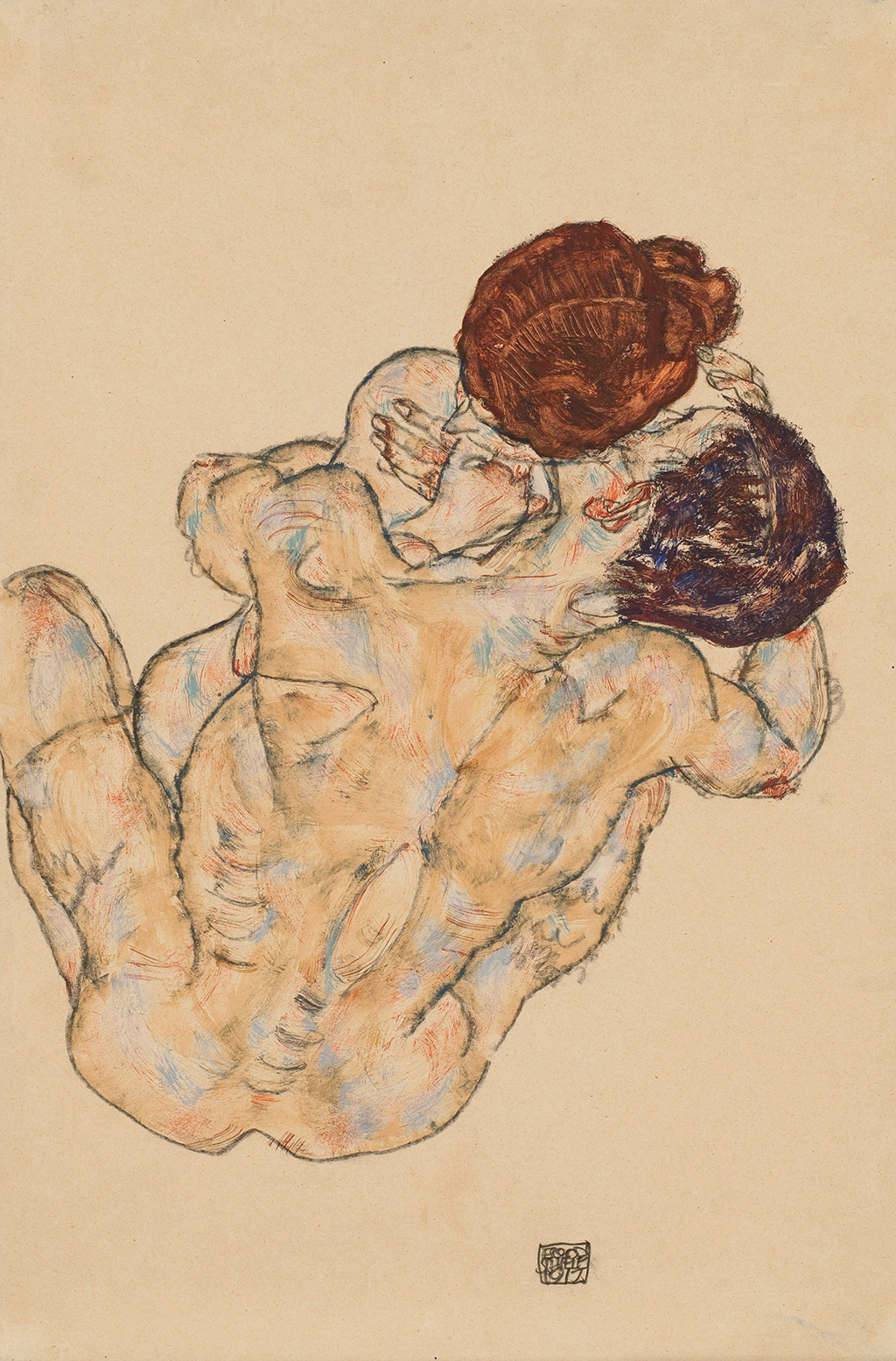This iteration of a series of three continues the Viennese use of an embrace as expressive symbolism.
Egon Schiele led a chaotic life from start to finish and this series of paintings reflects directly on the opening months of his marriage. Across the three, there is an increase in energy and expression as his emotions build and build. This series of self-portraits portray Egon as both a husband and father, as well as a lover. The latter is shown by his and his wife's posture in each artwork. The series spanned several years of work, culminating in his final Embrace artwork in 1917 which was completed in oils. This use of self-portraiture as a way of reflecting on one's entire life at any particular time reminds us of other famous artists such as Frida Kahlo and Vincent van Gogh. Edith and Egon sit together on the floor in this painting, looking distinctly vulnerable and almost child-like.
The two would both feature in other artworks from this artist's career, numbering into the dozens. Normally they would be alone, but this series helps us to understand more about their relationship which was likely to have been turbulent, not least considering the situation across Europe at the time as well as the artist's own personality. As such a sexual being, Egon was keen to create a visual reference to their close bond and he literally displays it here as they hold a strong embrace which gives out emotions such as love, protection and also trust. Egon gave us a view into his life in greater detail than almost any other artists and this was entirely in line with his expressive style where openess was essential in order to open up his work and his mind. The two would become adjoined in a similar way to how the Surrealists would later work elsewhere in Europe.
Some of the relationships experienced by Egon Schiele were researched through letters left behind after his death. These have helped us to learn more about his own behaviour, as well as examining how he felt about the different women in his life. His art would only tell on story, but written texts such as this can help us to get a more solid opinion on him. Some of these texts have been kept at the Leopold Museum, a venue in Austria that continues to hold the best selection of work from his career, including a number of oil paintings, watercolours and also drawings. Elsewhere in Vienna a number of other paintings from his exciting oeuvre can also be discovered and it is fair to say that his stamp remains entirely impressed on this city.





